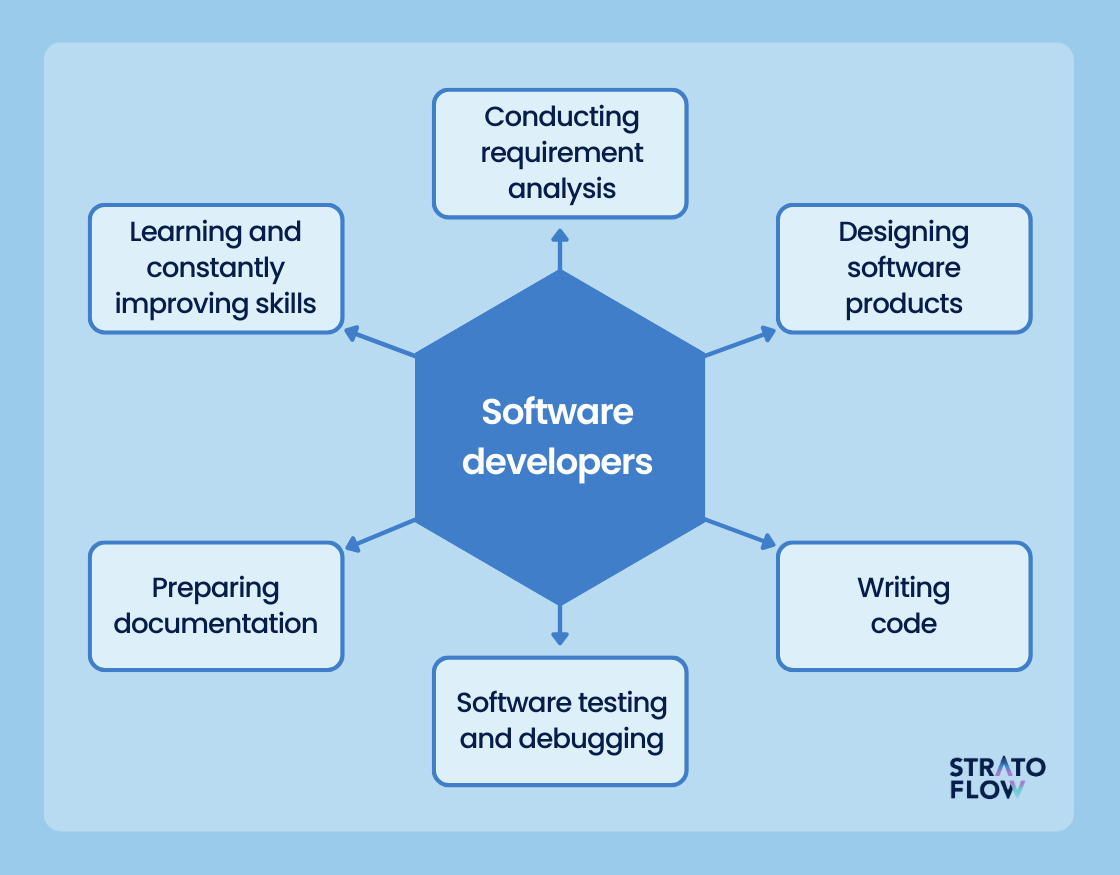Hire Dedicated Developers for Your Following Big Project with Confidence
Hire Dedicated Developers for Your Following Big Project with Confidence
Blog Article
Devoted Developers vs. In-House Teams: Which Is Right for You?
The decision between making use of committed developers and maintaining an internal team is a significant one that can affect the trajectory of your tasks and general company technique. Conversely, internal teams contribute to a natural firm society and a nuanced understanding of long-term objectives.
Understanding Dedicated Designers
The growing need for specialized skills in the technology market has actually caused the development of committed programmers as a sensible service for many organizations. These specialists are normally contracted on a task basis, allowing business to leverage certain knowledge without the lasting commitment related to full-time hires. Devoted developers are commonly ingrained within a client's group, providing versatility and scalability to fulfill project demands.
This version allows organizations to access an international skill pool, which is specifically advantageous in a quickly progressing technological landscape. Dedicated designers can be sourced from numerous geographical locations, making sure that business can discover the best ability at competitive prices. They usually bring a wealth of experience and understanding, having dealt with varied tasks throughout various industries.
Furthermore, specialized programmers can concentrate specifically on the jobs at hand, enhancing productivity and effectiveness. They are furnished to incorporate effortlessly right into existing operations, teaming up very closely with internal groups to achieve project objectives. This method not only decreases the concern of recruitment and training but also permits companies to continue to be active, adjusting promptly to altering market demands and technological advancements.
Benefits of In-House Teams

Moreover, internal groups tend to have a much deeper understanding of the firm's objective, worths, and goals. This positioning can boost employee interaction and inspiration, as staff member really feel extra linked to their job and the company's success. Additionally, having a specialized internal group enables far better placement of approaches and objectives, as these participants are consistently concentrated on the business's top priorities.
Internal teams likewise assist in quicker decision-making procedures, as they can react more quickly to modifications and obstacles. The recognized partnerships and knowledge with firm methods enable streamlined process and minimized miscommunication. Inevitably, the mix of a natural society, placement with business objectives, and reliable interaction makes internal groups a beneficial property for several companies, specifically those aiming to grow lasting development and development.
Expense Considerations
When assessing expense considerations, both devoted developers and in-house groups present unique monetary implications for organizations. Engaging devoted developers usually involves a pay-per-project or per hour price design, which can be affordable for businesses with fluctuating task demands. This method permits adaptability in scaling resources up or down, ensuring that firms just pay for the solutions they need.
On the other hand, internal teams require repaired prices, consisting of salaries, advantages, and overhead expenses such as office and tools. While this design offers better control and immediate schedule of resources, it might lead to greater long-term expenditures, specifically if the work does not justify a full time staff.
In addition, companies must consider the covert costs associated with employment and training of in-house staff members, which can further strain spending plans. In many cases, the time and resources invested in taking care of an in-house team can detract from the company's core organization objectives.

Job Administration and Flexibility
Task administration and flexibility are essential elements that best website design sites affect the option in between in-house groups and devoted programmers. Devoted groups frequently have actually established processes for handling jobs effectively, leveraging certain methodologies like Agile or Scrum, which assist in repetitive progress and versatility.

Inevitably, the selection in between in-house groups and specialized designers hinges on the wanted level of flexibility and the particular job administration requirements. Companies have to examine their operational characteristics, job complexity, and source availability to determine which alternative lines up best with their critical objectives.
Making the Right Selection
Selecting the ideal growth approach-- in-house groups or committed developers-- requires a cautious assessment of various aspects that straighten with a firm's strategic goals. On the other hand, internal groups can supply far better connection and assimilation with existing employees.
Following, evaluate your spending plan. Dedicated developers frequently provide an economical option for temporary jobs, while internal teams may incur greater lasting expenditures as a result of incomes, benefits, and overhead costs. Assess the degree of control and cooperation wanted; internal teams usually promote stronger communication and alignment with firm society.
If immediate outcomes are necessary, specialized developers can be onboarded quickly, whereas constructing an in-house team takes time for employment and training. If continuous advancement is crucial, investing in an in-house group may generate far better returns over time.
Conclusion
Finally, the look at here now choice between committed designers and internal teams pivots on task requirements and organizational objectives. Devoted designers supply adaptability and customized expertise, making them suitable for short-term initiatives. Conversely, in-house groups grow a natural society and deeper positioning with long-term goals. Careful evaluation app development software for pc of spending plan restraints, task timelines, and wanted control levels is vital for figuring out the most suitable approach, ensuring placement with calculated concerns and operational efficiency.
The choice in between using devoted programmers and keeping an in-house group is a substantial one that can affect the trajectory of your tasks and general business method.Project monitoring and versatility are critical aspects that influence the selection between specialized developers and internal teams. hire dedicated developers.In contrast, in-house groups may stand out in keeping a consistent task management framework due to their knowledge with the organization's culture and long-lasting objectives. Dedicated designers often provide a cost-efficient solution for short-term jobs, while internal teams may incur greater lasting expenditures due to salaries, benefits, and overhead costs.In conclusion, the decision between committed developers and in-house teams pivots on task requirements and organizational goals
Report this page